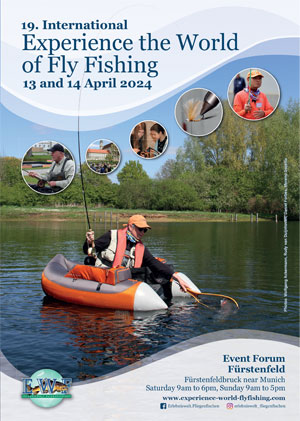The City of Aspen is planning to build a pair of dams in some of Colorado’s most iconic mountain landscapes and streams. One is slated for Maroon Creek, just below the Maroon Bells, and the other on Castle Creek not far below the old town of Ashcroft. These dams would inundate significant portions of these free-flowing streams along with portions of the Maroon Bells-Snowmass Wilderness. Why is this coming up now? Because the City must go to Water Court every six years and demonstrate that they are working to build these dams.
By Ken Neubecker, Regional Vice President, Colorado Trout Unlimited
This is not a good thing. Aspen has no need for these dams and reservoirs, no need to wreck these streams or the landscapes they inhabit. Colorado TU, along with partners at American Rivers, Western Resource Advocates and Wilderness Workshop are planning to object to these dams in Water Court.
Back in the 1960’s planners thought that Aspen’s population (1,101 in 1960) would reach 30,000 by the end of the century and that additional water supplies would be necessary. Aspen’s population didn’t grow much. In 2000 it was up to 5,914 and by 2010 had added less than a thousand more. Looking forward, the City’s population isn’t expected to grow much more over the next 60 years either, yet Aspen continues to hang on to the notion that they might, someday, need these destructive dams and reservoirs.

But they don’t, and the City itself claims they’ll probably never build them. Aspen currently holds a substantial portfolio of senior water rights on both streams. According to a study the City itself commissioned these existing rights can accommodate all projected water needs for the rest of this century even in the face of extreme climate change (City of Aspen Water Supply Availability Study, 2016 Update, June 2016).
So why is the City pursuing their conditional rights for dams they admit they will never probably build? Prudence is the excuse, but not a good reason. What the City is saying in court contradicts what they are saying in public. In court, they must say that they “can and will” build the dams. In public they say they probably won’t, but want to preserve the option. Preserving an option, to maybe, or then again maybe not, build the dams may sound prudent but it is not acceptable in Water Court. They either will, or they won’t. There is no “maybe”. Aspen can’t have it both ways.
Aspen’s primary argument is that they may need these additional water sources due to potential impacts from climate change. Climate change is a legitimate concern for water supply, but these dams will not help. Most models show that runoff and river flows will diminish throughout the Colorado River Basin, from Aspen downstream to the delta.
Aspen doesn’t exist in isolation from the rest of Colorado or the larger Colorado River basin. A 2012 study by the Bureau of Reclamation (BOR) suggests that “the mean natural flow (of the Colorado River) … is projected to decrease by approximately 9%” by 2060. That means an additional 3.2 million acre-foot deficit in what is already a seriously depleted system (an acre-foot is about 326,000 gallons, or about what two normal families will use in a year). The BOR report also anticipates an “increase in drought frequency and duration”. Lake Powell is currently only half full, and Lake Mead even less (38%). Water shortage in the Colorado Basin is likely to be with us for a long time.
Colorado signed a compact with all the other Colorado River basin states in 1922. This compact requires that a certain amount of water be left in the river for the lower basin. If we do find ourselves amid a major water shortage the demands from the lower basin states will drain any reservoir with such junior rights as Aspen’s (1971). And there are numerous pre-1922 rights downstream that will also demand any water that might be stored behind these dams.

Aspen does not need these dams and reservoirs. If they are truly prudent, and progressive, they never will. The people of Aspen would be much better served if the City dropped these outdated dams and develops real solutions that ensure both a reliable water supply and the important ecosystems of Castle and Maroon Creeks. Intact and fully functioning stream ecosystems are a much better hedge against climate change than a pair of outdated and useless dams.
CTU and its partners are willing and able to work with Aspen to develop realistic and modern 21st century solutions for future water needs. Aspen, of all places, can and should take a leadership role and not just keep kicking the can of outdated ideas down the road. We need to work with these streams, not against them.
Source: www.thefishingwire.com.






